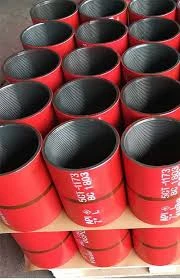- Afrikaans
- Albanian
- Amharic
- Arabic
- Armenian
- Azerbaijani
- Basque
- Belarusian
- Bengali
- Bosnian
- Bulgarian
- Catalan
- Cebuano
- Corsican
- Croatian
- Czech
- Danish
- Dutch
- English
- Esperanto
- Estonian
- Finnish
- French
- Frisian
- Galician
- Georgian
- German
- Greek
- Gujarati
- Haitian Creole
- hausa
- hawaiian
- Hebrew
- Hindi
- Miao
- Hungarian
- Icelandic
- igbo
- Indonesian
- irish
- Italian
- Japanese
- Javanese
- Kannada
- kazakh
- Khmer
- Rwandese
- Korean
- Kurdish
- Kyrgyz
- Lao
- Latin
- Latvian
- Lithuanian
- Luxembourgish
- Macedonian
- Malgashi
- Malay
- Malayalam
- Maltese
- Maori
- Marathi
- Mongolian
- Myanmar
- Nepali
- Norwegian
- Norwegian
- Occitan
- Pashto
- Persian
- Polish
- Portuguese
- Punjabi
- Romanian
- Russian
- Samoan
- Scottish Gaelic
- Serbian
- Sesotho
- Shona
- Sindhi
- Sinhala
- Slovak
- Slovenian
- Somali
- Spanish
- Sundanese
- Swahili
- Swedish
- Tagalog
- Tajik
- Tamil
- Tatar
- Telugu
- Thai
- Turkish
- Turkmen
- Ukrainian
- Urdu
- Uighur
- Uzbek
- Vietnamese
- Welsh
- Bantu
- Yiddish
- Yoruba
- Zulu
tubing and casing
Understanding Tubing and Casing in Oil and Gas Operations
In the oil and gas industry, the processes of drilling and production rely heavily on two critical components tubing and casing
. These elements play vital roles in ensuring the efficiency, safety, and integrity of well operations.Casing is a series of steel pipes that are inserted into boreholes after drilling is completed. Its primary function is to stabilize the wellbore, preventing the walls from collapsing and protecting the surrounding geological formations. Casing also serves to isolate high-pressure zones, ensuring that hydrocarbon fluids do not migrate uncontrollably to the surface or contaminate groundwater supplies. Various types of casing, such as surface casing, intermediate casing, and production casing, are used at different depths in the wellbore, each designed to handle specific pressure and environmental conditions.
Surface casing is typically the first layer installed, running from the surface to a predetermined depth. Its chief purpose is to protect the freshwater aquifer and provide a stable base for the subsequent drilling operations. Intermediate casing follows, often used in cases where there are significant changes in geological conditions or pressure zones. Finally, production casing is installed in the section of the well from which oil or gas will be produced, designed to withstand the high pressures encountered in production.
tubing and casing

Tubing, on the other hand, is the pipe through which oil and gas are transported from the reservoir to the surface. It is installed inside the production casing and is typically smaller in diameter than the casing. Tubing is crucial for the extraction process, as it allows for the efficient and controlled flow of hydrocarbons to the surface. Different tubing materials, such as stainless steel or carbon steel, may be used based on the specific needs of the well, including the type of fluid being extracted and the temperature and pressure of the environment.
The relationship between casing and tubing is essential for the safe and efficient extraction of resources. While casing protects the wellbore and surrounding environment, tubing facilitates the actual flow of hydrocarbons. Together, they ensure that drilling operations can be conducted with minimal risk of blowouts, leaks, or environmental contamination.
In summary, tubing and casing are fundamental elements of oil and gas operations. They work in tandem to provide a safe and efficient pathway for hydrocarbon extraction while protecting both equipment and the environment. As technological advancements continue to enhance drilling techniques, the importance of understanding and optimizing these components becomes increasingly critical for the future of energy production. Sustainable practices, coupled with effective design and installation of tubing and casing, will be key in navigating the challenges of modern energy demands.
-
Tubing Pup Joints: Essential Components for Oil and Gas OperationsNewsJul.10,2025
-
Pup Joints: Essential Components for Reliable Drilling OperationsNewsJul.10,2025
-
Pipe Couplings: Connecting Your World EfficientlyNewsJul.10,2025
-
Mastering Oilfield Operations with Quality Tubing and CasingNewsJul.10,2025
-
High-Quality Casing Couplings for Every NeedNewsJul.10,2025
-
Boost Your Drilling Efficiency with Premium Crossover Tools & Seating NipplesNewsJul.10,2025







